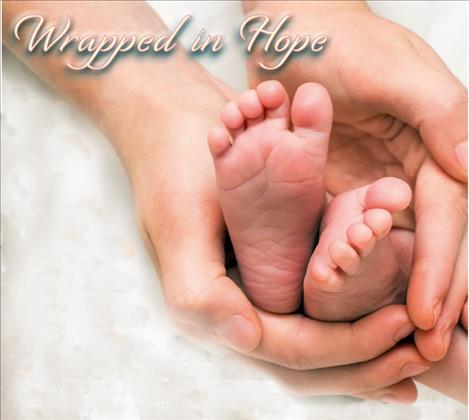Drugs affecting babies before birth
Hey savvy news reader! Thanks for choosing local.
You are now reading
1 of 3 free articles.
The number of babies born with drugs in their systems increased to 49 percent earlier this year in Lake County – but there is hope.
“The numbers are astounding,” said Dr. Jamie Straub of St. Joseph Medical Center. She added that vilifying the moms doesn’t solve the problem; it might even make it worse.
A new program called Wrapped in Hope was designed to help improve the outcomes for moms facing issues with substances and it was launched in May of this year.
“This is a huge issue,” said Caroline McDonald of St. Luke Community Healthcare Foundation. She is the spokesperson for Wrapped in Hope. She added that the county has a record number of people facing substance abuse issues in general and people from healthcare to schools are noticing the impact on children.
The problem is so urgent that local healthcare organizations — sometimes competing groups — decided to work together on a solution. Two hospitals, St. Luke and St. Joseph, started a study to see just how serious the problem is in Lake County.
The two hospitals reported an average rate of 14 percent of babies born in 2013 with risk for Neonatal Abstinence Syndrome, which means they had a substance in their systems causing problems when they were born. The number was at 22 percent in 2014.
The two hospitals delivered a combined 279 babies in 2015 and 29 percent of them were at risk for NAS. The results continued to increase when the numbers hit a record high in the first few months of 2016 with a rate of 49 percent, although the numbers were not quite that big for the entire year. In the first few months of 2016, a spike in the numbers occurred, but they went down drastically by the middle of the year.
Representatives for both hospitals said 32 percent would be a better average for 2016. The final results for the year might be even lower due to the efforts of people involved with Wrapped in Hope. Several factors may be causing the numbers to increase. More women might be using a number of different drugs from prescription to illegal substances, but a second factor needs to be considered.
“We might have more women coming in for care and early intervention,” Dr. Straub said.
The problem isn’t localized to Lake County.
“The statistics are on par with the national average,” she said.
McDonald said there isn’t a single type of woman affected by this issue. She added that the picture of a drug-using mom that pops up in a person’s mind probably isn’t correct, and pregnant women with substance issues of all kinds are asking for help.
“It amazes me how brave they are,” she said. “It takes a lot of courage to step up and go in when many people see this problem as a moral weakness.”
And those women need support.
“We don’t have time for moral outrage about this,” she said. “It’s not productive. We need to offer them help.”
Dr. Cara Harrop of St. Luke said the problem can start with a prescription for pain medication, maybe she slipped and broke her arm, gets a refill for medication, and when the injury is healed, the doctor stops the prescription.
“But she finds out she is pregnant,” she said.
The scenario could be a little different. After the doctor denies the refill for pain medication, the patient gets sick from withdrawals and maybe they find heroine, and she finds out she is pregnant.
“These are super addictive drugs,” she said of prescribed medication.
Several healthcare groups are working together on a solution including the two hospitals, Polson Health through Kalispell Regional Healthcare, CSKT Tribal Health Department, and Lake County Public Health.
Funding was found in the form of grants totaling about $200,000. The grants were from Montana Health Care Foundation, S&K Technologies through Providence Montana Health Foundation, and the Confederated Salish and Kootenai Tribes.
Wrapped in Hope is a program with an educational focus that works to provide convenient resources for women dealing with substance issues while pregnant.
“We don’t judge how you got here,” McDonald said. “We offer women support for a healthy pregnancy.”
The program launched in May and, so far, about 25 different women have stayed with the program. “Each situation is different and requires a different treatment,” she said.
The program is also helping moms make it to their healthcare appointments and continue treatment after the baby is born.
“Sometimes they struggle with transportation or childcare for their other children and we want to make it easier for them,” she said.
The program was originally going to be launched with public outreach and education including websites and other resources.
“We needed to get this going so we decided to just jump in and make it happen,” she said. “In the next six months, we will start a public education program.”
One main message sums up the program.
“It’s important to get prenatal care, judgment free,” Dr. Straub said. “We are here to help and keep families together.”
A pregnant woman needing help can talk to any healthcare provider in Lake County and they will be connected to services. People can also talk to healthcare providers about making a donation to the program with services or funding.
















